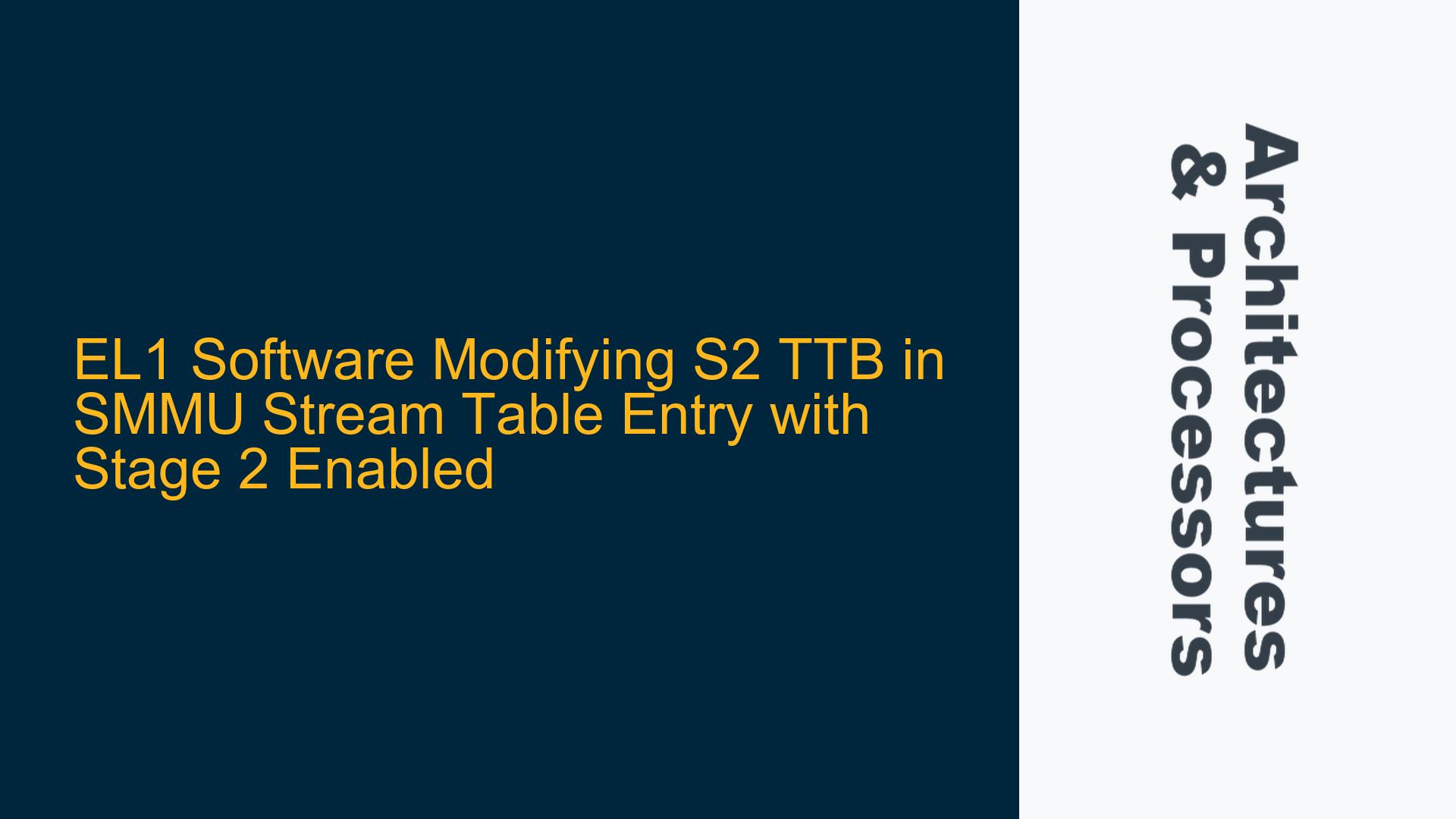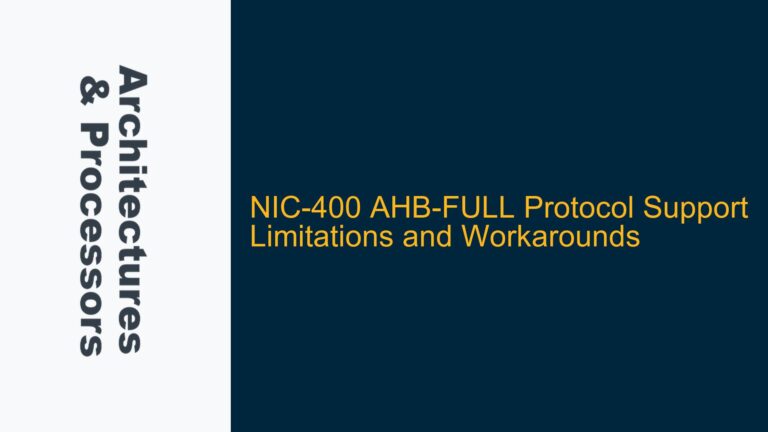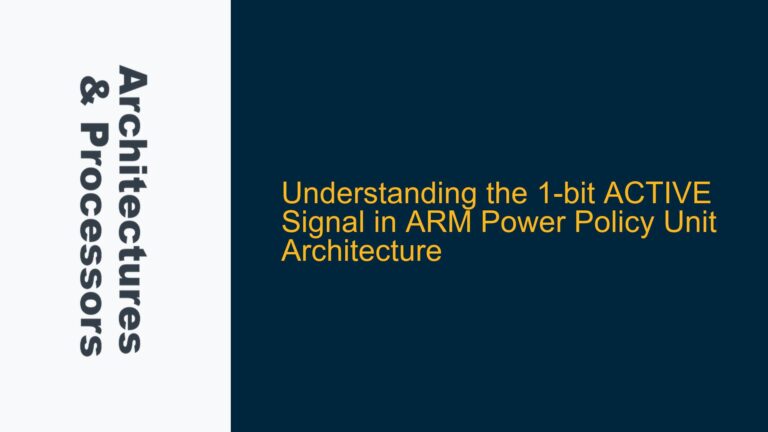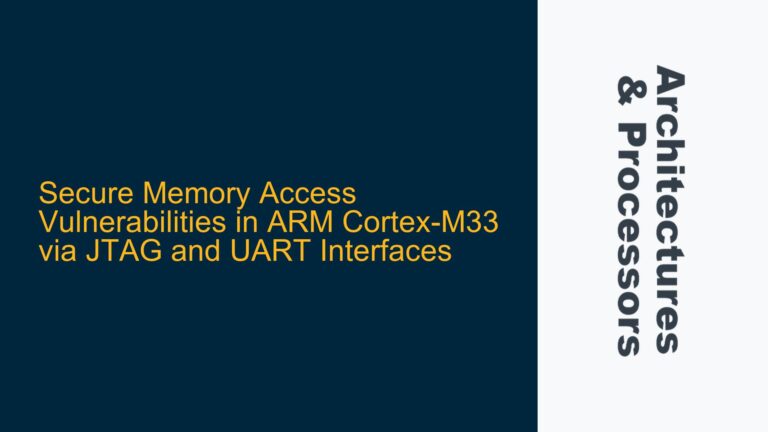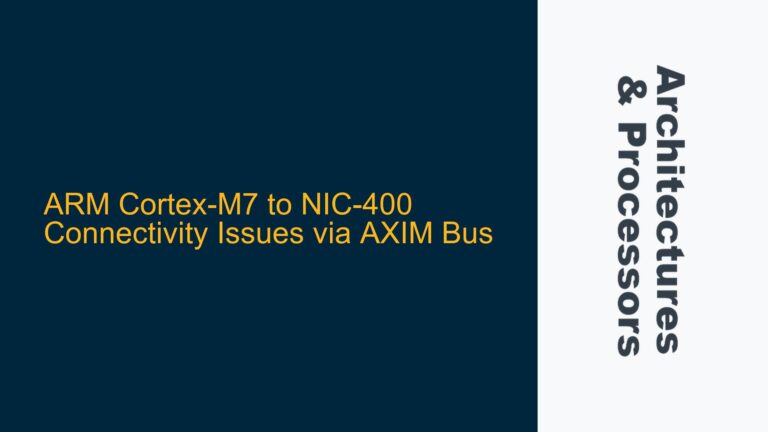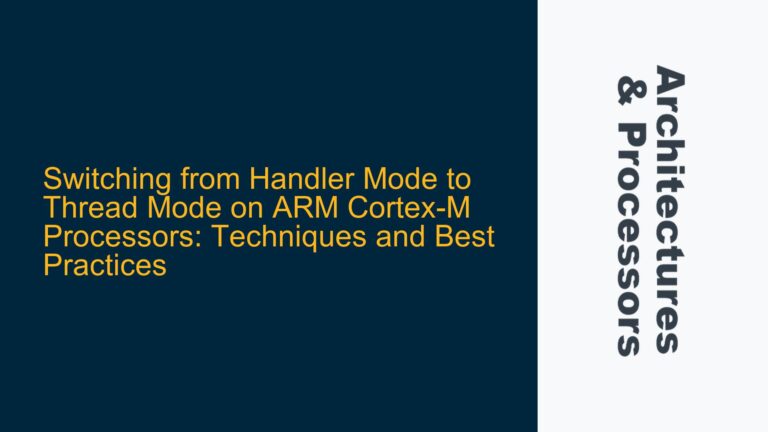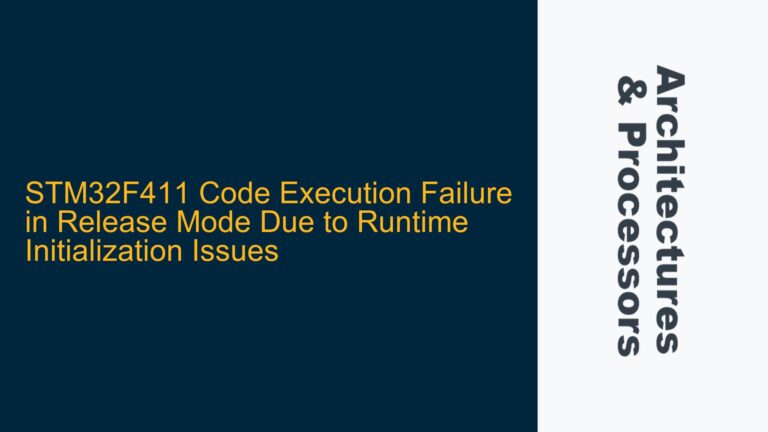EL1 Software Access to S2 Translation Table Base (TTB) in SMMU Stream Table Entry
The ARM System Memory Management Unit (SMMU) is a critical component in modern ARM-based systems, enabling virtualization and memory isolation for devices. A key feature of the SMMU is its support for two-stage address translation, where Stage 1 (S1) handles virtual-to-physical address translation within a guest operating system (OS), and Stage 2 (S2) manages physical-to-machine address translation by the hypervisor. The Stream Table Entry (STE) in the SMMU contains configuration details for each device, including the Translation Table Base (TTB) for both S1 and S2 translations.
A common point of confusion arises when software running at Exception Level 1 (EL1), typically the guest OS kernel, appears to modify the S2 TTB in the STE. This behavior seems counterintuitive because the S2 translation is managed by the hypervisor running at EL2, and EL1 software should not have direct access to hypervisor-controlled resources. This issue is particularly relevant in virtualized environments where device assignment and memory isolation are critical for security and performance.
To understand this issue, we must delve into the roles of the hypervisor, guest OS, and SMMU in managing address translation. The hypervisor is responsible for configuring the STE, including the S2 TTB, to enforce memory isolation between virtual machines (VMs). However, the guest OS may need to configure S1 translation tables for devices assigned to it. This interplay between EL1 and EL2 software, along with the SMMU’s configuration, can lead to scenarios where EL1 software appears to influence S2 TTB settings.
Hypervisor Control Over STE and Delegation of S1 Configuration
The primary cause of EL1 software appearing to modify the S2 TTB lies in the delegation of S1 translation management to the guest OS. The hypervisor, running at EL2, retains full control over the STE and its S2 TTB field. However, to enable efficient device assignment and reduce hypervisor overhead, the hypervisor may delegate the management of S1 translation tables to the guest OS. This delegation is achieved through mechanisms such as virtual IOMMU (vIOMMU) and context descriptors (CDs).
When a device is assigned to a VM, the hypervisor configures the STE to point to a CD, which contains the S1 translation table base address. The CD can reside in either hypervisor memory or guest memory. If the CD is in guest memory, the guest OS can modify the S1 translation tables directly. However, the hypervisor must still ensure that the guest cannot modify the S2 TTB or other critical STE fields. This is typically enforced through memory protection mechanisms and hypervisor-mediated updates to the STE.
The confusion arises because the guest OS may program the S1ContextPtr field in the STE indirectly through a vIOMMU interface. The vIOMMU emulates the behavior of a physical IOMMU, allowing the guest OS to manage S1 translations as if it had direct control. However, all updates to the STE, including the S1ContextPtr, are mediated by the hypervisor. The hypervisor validates and translates guest requests before updating the actual STE in SMMU memory.
Ensuring Secure and Correct SMMU Configuration in Virtualized Environments
To address the issue of EL1 software appearing to modify the S2 TTB, system designers and software developers must implement robust mechanisms for managing SMMU configuration in virtualized environments. The following steps outline best practices for ensuring secure and correct SMMU operation:
First, the hypervisor must enforce strict access control over the STE memory region. This can be achieved by marking the STE memory as privileged and accessible only at EL2. The hypervisor should also use hardware features such as ARM’s Memory Protection Unit (MPU) or TrustZone to prevent unauthorized access by EL1 software.
Second, the hypervisor should implement a secure interface for delegating S1 translation management to the guest OS. This interface should validate all guest requests to ensure they do not attempt to modify S2 TTB or other critical STE fields. The hypervisor can use mechanisms such as vIOMMU and virtual function I/O (VFIO) to mediate guest access to SMMU configuration.
Third, system designers should carefully configure the SMMU to enforce separation between S1 and S2 translations. This includes ensuring that the S1ContextPtr in the STE points to a CD that is either in hypervisor memory or in a guest memory region that is explicitly allowed by the hypervisor. The hypervisor should also monitor and validate all updates to the CD to prevent unauthorized modifications.
Finally, developers should use debugging and monitoring tools to verify the correct operation of the SMMU in virtualized environments. This includes checking that the S2 TTB is not modified by EL1 software and that all S1 translation updates are properly mediated by the hypervisor. ARM’s CoreSight and Performance Monitoring Unit (PMU) can be used to trace SMMU operations and identify potential security or performance issues.
By following these steps, system designers and software developers can ensure that the SMMU operates securely and efficiently in virtualized environments, preventing unauthorized modifications to the S2 TTB while enabling efficient device assignment and memory management.
